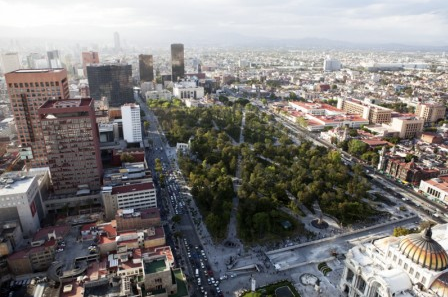
Photo: Screen-Shot-2016-09-08-at-12.30.47
The role of utilities is key in facing urban population growth
08 September 2016
This is the fourth installment of a four-part series of posts on utility transformation, by guest blogger Marcus Törnqvist, Head of Utilities Northern Europe and Central Asia at Ericsson (on Twitter as@MarcusTqvist)*.
On the one hand, a higher concentration of inhabitants in a limited area puts strain on the infrastructure. Infrastructure failures in a densely populated area have larger, more immediate, consequences (although the up-side is that infrastructure investments pay off relatively fast). But in reality:
Fact #4–population growth is concentrated to cities
The urban population grew 55 percent globally from 1990 to 2010. It is, of course, challenging for city developers and infrastructure suppliers, but it’s also a great opportunity in sustainability terms. In particular, investment in more concentrated populations opens the door for efficiency gains and cross-sector synergies that can decrease overall greenhouse gas emissions.
Compared to the global average of 51 percent, the concentration of population in cities in many developed economies is very high. In fact, the average in the European Union is 74 percent and in my home country Sweden it is 85 percent.
A number of interests naturally intersect in cities. And it’s that aggregation of interests that makes cities perfect locations not only to find investment synergies, but also to develop and innovate solutions for lessening greenhouse gas emission and other problems. The cities are, of course, not the only answer to the climate challenge–transport, agriculture, and a number of industries also have a great carbon impact outside urban areas–but the cities are still key to overall solutions.
Society needs to rely on the logic of many small savings to contribute to the circular economy, so areas like central heating and central cooling, public transportation systems, charging infrastructure, storage, and management of valuable waste will all play important roles.
New technology in transport and buildings and carbon-neutral energy production are good examples of how innovations increasingly push development in the right direction. The utility industry is already on top of how to make the best use of distributed generation and energy storage solutions. And electric vehicles and smart grids are some of the ICT solutions that potentially decrease the society’s environmental impact.
Utilities enable smart cities
Since central heating and cooling, charging stations, public transport systems, waste management, recycling and power generation are important tools to neutralise the carbon footprint of cities–the role of the utilities is key.
Their existing roles and missions might need to be challenged to enable the needed development in cities. Co-operation, partnership, and ecosystem development are definitely required, and it’s important to take on new knowledge, ICT solutions, and technologies as they develop. Many utilities take an active role in developing and defining the new solutions and landscapes. Many have experienced that it is hard and it requires a new type of leadership to enable and lead development in new technologies and beyond traditional organizational borders.
Smart city initiatives lead the development
I’m proud that Ericsson is participating in a number of smart city initiatives around the globe. Personally, I have been engaged in the Stockholm Royal Seaport project, which is planned to include 12,000 homes and 30,000 workspaces.
The project has been awarded the C40 Cities Award as the best sustainable urban development project at COP21 in December 2015. In this project, Ericsson contributes with our technology to enable visualisation and control of electricity use (demand response), and environmental impact of the inhabitants of 155 apartments. One of the things we are doing is to connect dryers, washing machines, and electric vehicle charging stations to enable users to run them at the best possible time based on market price signals for electricity or environmental concerns.
During 2017, we will collect a lot of data to analyse consumer behaviour, what triggers behavioural change, and what savings that can be achieved in terms of kWh, greenhouse gas emissions, and money. The expectation is that while the absolute number per individual and household will relatively low, when the numbers are aggregated to districts or entire cities–the impact is not only significant but huge.
The European Utility Week 2016 is not that far away. Meet Ericsson @ European Utility Week (EUW16)
*This post originally appeared on Ericsson’s Networked Society blog








